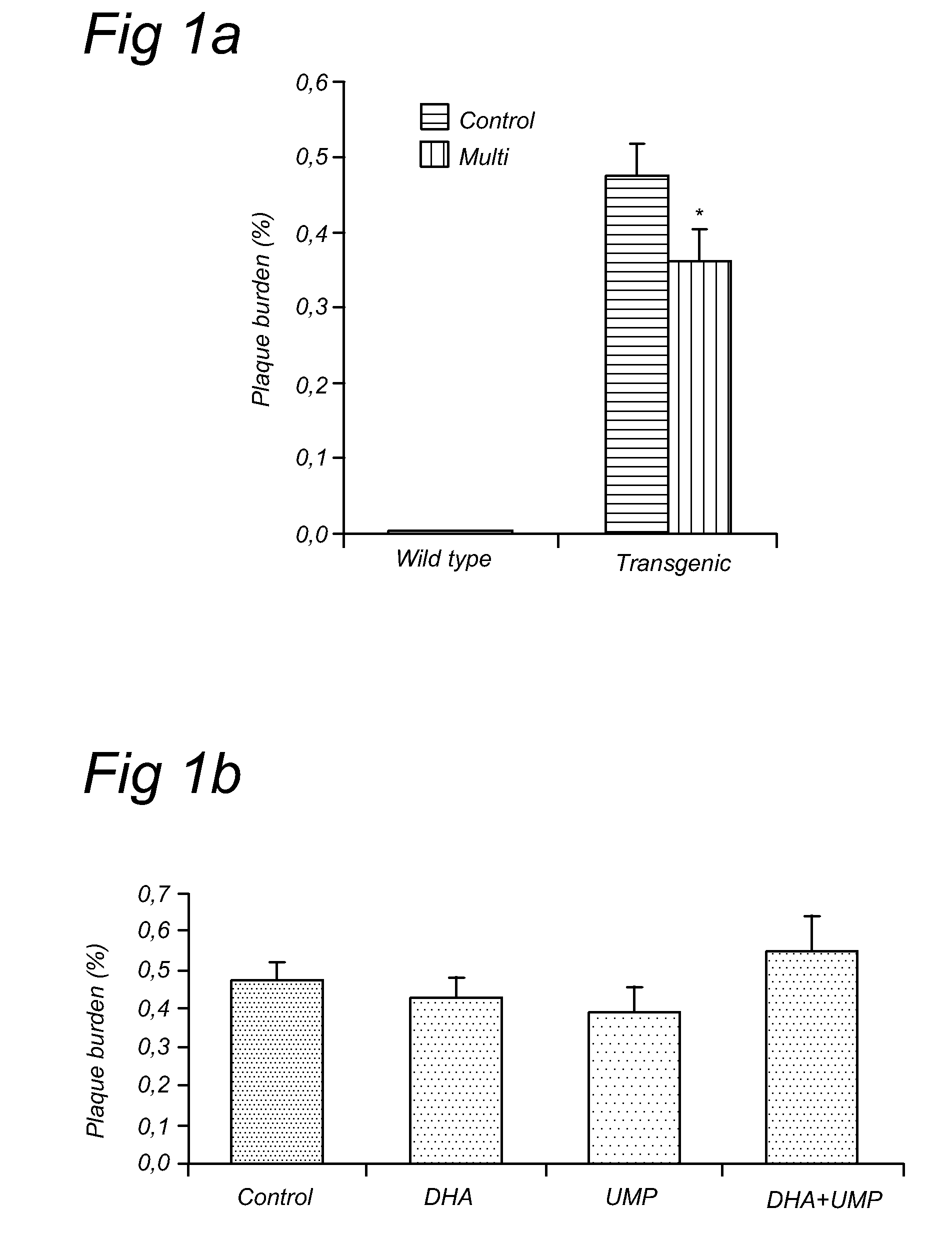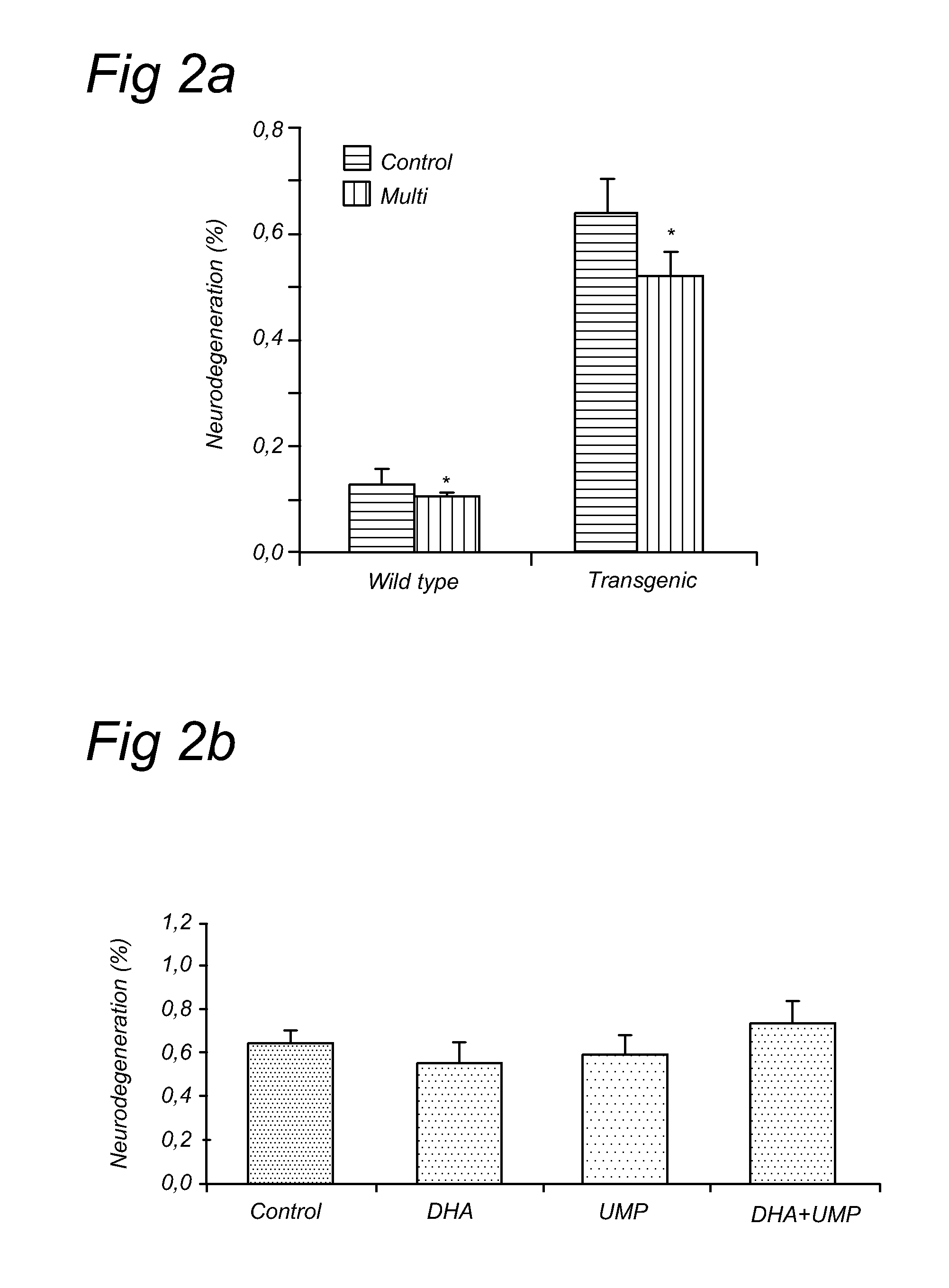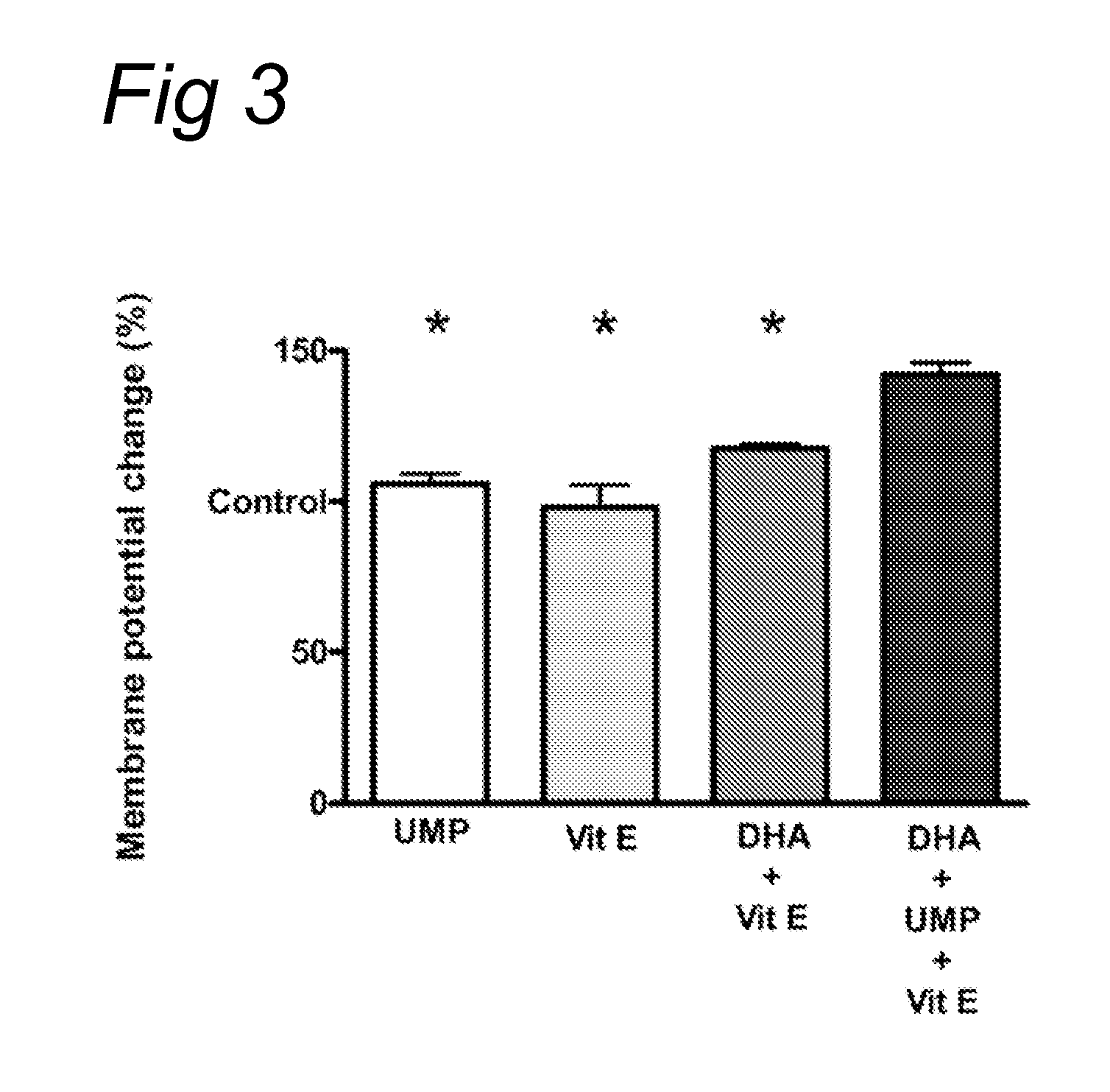Unit dosage for brain health
a technology of brain health and dosage, applied in the field of low-volume administration forms, can solve the problems of insufficient intake of active ingredients, and insufficient effect in patients with reduced appetite or disturbed eating behaviour, so as to prevent memory decline and/or cognitive dysfunction, reduce the burden of abeta plaques, and effectively use
- Summary
- Abstract
- Description
- Claims
- Application Information
AI Technical Summary
Benefits of technology
Problems solved by technology
Method used
Image
Examples
examples
[0074]Capsule Composition
[0075]A capsule was prepared comprising a blend of 500 mg marine oils, comprising 60 mg docosahexaenoic acid. The amount of EPA was 90 mg. It included 150 mg uridine monophosphate and 6 mg alpha-tocopherol. All numbers were based on the dry weight of the capsule. The total weight of the capsule was 1.1 g. The capsule further contained glycerine, polysorbate 40, and calcium alginate.
[0076]One to four of these capsules were recommended daily for preferably more than one month.
[0077]Experiment 1
[0078]The current experiment tested whether UMP, DHA, UMP+DHA and UMP+DHA+alpha-tocopherol could reduce abeta plaques and neurodegeneration in Alzheimer's disease (AD) model mice, the APP / PS1 mice. These mice start showing plaques in their brains as early as 4-5 months of age and are considered a good model for AD in scientific literature.
[0079]The mice were fed diets enriched in (1) UMP, (2) DHA, (3) UMP+DHA or (4) UMP+DHA+alpha-tocopherol starting at 3 months of age, j...
PUM
| Property | Measurement | Unit |
|---|---|---|
| dry weight | aaaaa | aaaaa |
| weight | aaaaa | aaaaa |
| weight ratio | aaaaa | aaaaa |
Abstract
Description
Claims
Application Information
 Login to View More
Login to View More - R&D
- Intellectual Property
- Life Sciences
- Materials
- Tech Scout
- Unparalleled Data Quality
- Higher Quality Content
- 60% Fewer Hallucinations
Browse by: Latest US Patents, China's latest patents, Technical Efficacy Thesaurus, Application Domain, Technology Topic, Popular Technical Reports.
© 2025 PatSnap. All rights reserved.Legal|Privacy policy|Modern Slavery Act Transparency Statement|Sitemap|About US| Contact US: help@patsnap.com



